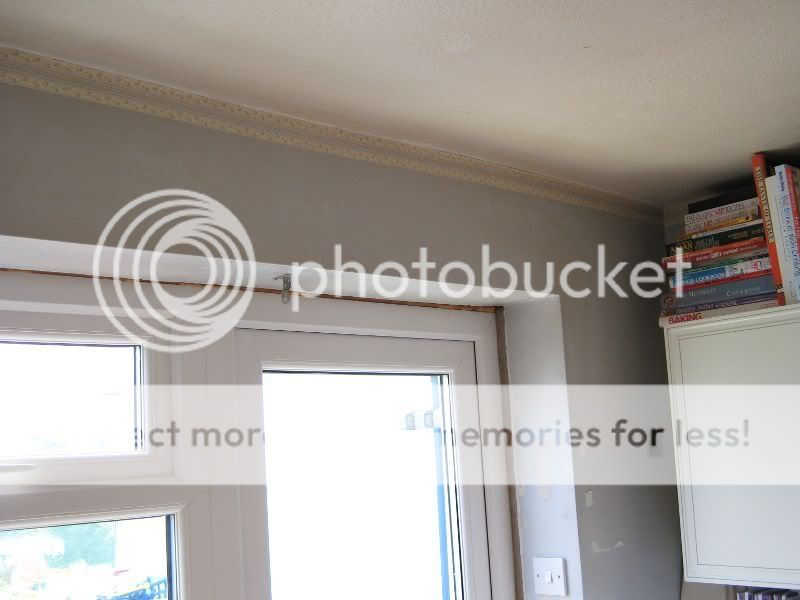Hi, I'm hoping someone can give me some advice about the wall above my kitchen window/door.
We are just about to undergo a complete kitchen refit and in the process will need the walls and ceiling completely re-plastering. For this I will get a professional plasterer in but I will want to do most of the preparatory work myself so that the plasterer will just need to do the final coat.
My kitchen window & door has recently been replaced which highlighted the fact that the original was neither square nor installed completely vertical and also the wall above the window is not level and slopes upwards left to right. So now with the new window installed (upright & square) it is apparent that the wall above the window needs lowering by about 20mm on the right side tapering down to nothing on the left.

What I was planning to do fix a straight edge to the wall above to act as a guide and then use basecoat plaster to fill in and level the wall up. I realize I will probably need to go in two stages as 20mm is too much for one coat.
Does this sound like a reasonable plan and, if so, how should I prepare the existing wall to get good adhesion. At the moment it is just old painted plaster.
Many thanks for any advice.
Russell
We are just about to undergo a complete kitchen refit and in the process will need the walls and ceiling completely re-plastering. For this I will get a professional plasterer in but I will want to do most of the preparatory work myself so that the plasterer will just need to do the final coat.
My kitchen window & door has recently been replaced which highlighted the fact that the original was neither square nor installed completely vertical and also the wall above the window is not level and slopes upwards left to right. So now with the new window installed (upright & square) it is apparent that the wall above the window needs lowering by about 20mm on the right side tapering down to nothing on the left.

What I was planning to do fix a straight edge to the wall above to act as a guide and then use basecoat plaster to fill in and level the wall up. I realize I will probably need to go in two stages as 20mm is too much for one coat.
Does this sound like a reasonable plan and, if so, how should I prepare the existing wall to get good adhesion. At the moment it is just old painted plaster.
Many thanks for any advice.
Russell

